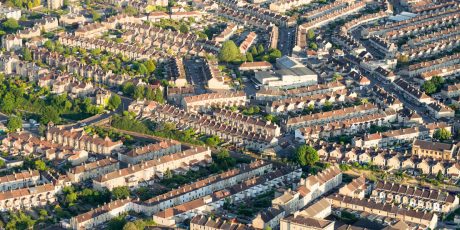
Bringing together the physical and the digital to create smart communities
This article was originally published by Capita.
From towns to cities to villages, all communities are complex structures.
This is something I discussed recently at this year’s LGA Conference, in a Capita workshop entitled ‘Creating a connected Digital Place’. The session focused on ‘the art of the possible’ in terms of digital infrastructure and connected citizens and communities.
Common challenges
While each community has its own unique pain points, there are nevertheless, many common challenges that affect the vast majority:
- Mobility and accessibility: traffic congestion, lack of parking spaces, poor road quality and inadequate public transport all compromise a community’s ability to move freely and can make any town or city a less attractive place to live, work or invest in.
- Health and care: with growing and ageing populations, the provision of adequate access to GP surgeries, dentists, hospital beds, housing and social care is a growing and increasingly costly concern.
- Safety: in addition to physical wellbeing and the delivery of effective emergency services, cyber security and data integrity have become equally important.
- Productivity: communities must be competitive. A town that is seen as an attractive investment proposition by employers, will encourage more people to live and work there.
- Environmental sustainability: by developing greener, cleaner environments and managing natural resources, communities can reduce costs, cut pollution and improve air quality to create healthier spaces.
As I said before, each place also has its own specific pain points in addition to those touched on above, and in such a challenging financial environment, focusing on one key area can provide the starting point for a smart community, such as improving air quality, reducing lighting costs or cutting traffic congestion.
People first
The most important consideration will always be people – smarter, connected communities are ultimately about supporting citizens and creating the right environment for them, whether they are residents, workers or visitors. Take our work in Newcastle-upon-Tyne for example, where smart sensors are currently gathering data on parking space availability, traffic congestion patterns, air quality, bins and street lighting. We’re also using AI to predict road surface wear and tear. All of these initiatives are aimed at making an already great city an even better place to live, work and visit.
Bringing together the digital and the physical
Yet although the data accrued by these sensors and predictive analytics is interesting, it is worthless on its own. And the technology being used to generate this information can’t resolve these issues alone. What they can do however, is offer council leaders valuable insights into these areas and their effects of on the community, which can help them consider how best to address them.
When embarking on projects aimed at creating smart, connected communities, it’s important to:
- Avoid silos – a smart community requires collaboration across public sector, business, academia and citizens, combined with a genuine desire to break down internal barriers and securely share data across all parties.
- An integrated digital strategy that is commonly agreed and provides clear direction, together with leaders who are prepared to carry it through.
- A realistic budget; an initial outlay is inevitable in order to achieve long-term savings – take smart lighting, which has been proven over time to substantially reduce costs.
Working in real environments like Newcastle upon Tyne and Manchester, with real residents, workers and visitors, is helping us bring together the physical and the digital for the benefit of local people. And by bringing together different digital technologies in one place, we are really able to assess the art of what is possible.
For information on our smart communities portfolio, including Cisco Kinetic for Cities, visit our website or contact us directly.
Tags:


